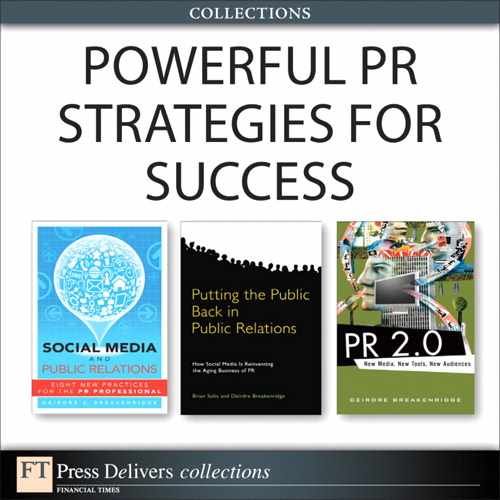Foreword
Of all the industries to be affected by the massive changes brought about by social media, Public Relations has been on the front lines since the beginning. The reason is simple: Much of social media is done in public, by the public, and the dynamics that have shaped public relations in the past (media relations, interactions with opinion leaders and influencers, and of course, crisis/reputation management) are not only present in social media, but often accentuated and amplified by it.
Recent history is filled with scores of examples of how “social” has dramatically affected brands and even business functions beyond reputation—from “Dell Hell” to “Motrin Moms” to Kenneth Cole promoting his brand at the expense of those sacrificing during the Arab Spring. Social media has proven to upend not only modern day communications processes, but it also possesses the potential to impact a company’s bottom line or, at minimum, its reputation. It may not be social media that broke the initial story of Apple’s labor practices, but it is social media that keeps a story relevant and in the “newsfeeds” of our lives—whether it be via Facebook, Twitter, or even niche networks such as Pinterest.
The way we’ve looked at Public Relations in the past must be re-thought or, at minimum, re-examined. In Edelman’s 2012 Trust Barometer study, for example, the stakeholder who enjoyed the most significant gain in perceived trust compared to the previous year was a “regular employee.” Compare this to the stakeholder group that ranked last (CEOs), and note that regular employees ranked just below “a person like yourself” but above NGO representatives. The data suggests a trend that indicates institutions and those who represent them remain more challenged when it comes to trust versus individuals. If the Public Relations industry were to find itself heading straight into the eye of the perfect storm of it’s time, it might just be now.
Never before have professional communicators been tasked with not only making statements, but also understanding “sentiment” viewed not only through the eyes of traditional media, but also through the eyes of the actual public who is empowered to communicate directly via blog, tweet, post, and so on. In today’s communications landscape, the journalist now shares the stage with scrappy niche publishers who can break news without their help. The media industry has had no choice but to adapt to this—and many journalists, such as David Pogue from the New York Times, now report and influence opinion showing a mastery of not only traditional media techniques, but also of social media tactics.
All of this spells a singular reality for the modern-day communicator: Adapt or die trying. Being a “PR pro” today means understanding and being effective in community management. Practitioners must understand more than ever how to play well with their counterparts in customer service and advertising (especially digital), and the modern-day communicator must understand business strategy—to not only respond and adapt, but to also help shape favorable outcomes for the individuals, organizations, and public they represent. This must be done with a level of transparency and ethical standards that remain higher than ever as social media has proven to punish those who attempt to manipulate it for personal gain.
Deirdre Breakenridge has put together a comprehensive set of guidelines, resources, opinions, and clear thoughts that are designed for the communicators of today and tomorrow who have no choice but to live and work in a real-time, data-driven world. Her constructs set up a cohesive foundation that professionals both in-house and on the services side will be able to benefit from. Her eight PR practices lay out in detail what needs to be considered when PR meets social so that the right infrastructure can be put in place before it’s even needed. Consider these thoughts a blueprint for both communication and engagement in an era of social business.
David Armano
EVP of Global Innovation & Integration for Edelman Digital and author of the Logic + Emotion blog
